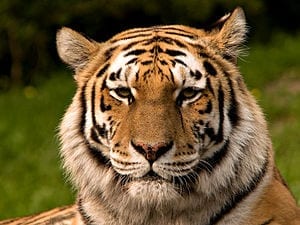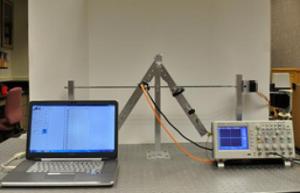Right now, cloning is not a viable conservation strategy. But some researchers remain optimistic that it will help threatened species in the future
In 2009 the Brazilian Agricultural Research Corp. (Embrapa) and the Brasilia Zoological Garden began scavenging and freezing blood, sperm and umbilical cord cells from roadkill and other wild animals that had died, mostly in the Cerrado savanna—an incredibly diverse collection of tropical forest and grassland ecosystems home to at least 10,000 plant species and more than 800 species of birds and mammals, some of which live nowhere else in the world. Specimens were collected from the bush dog, collared anteater, bison and gray brocket deer, among other species.
The idea was to preserve the genetic information of Brazil’s endangered wildlife. One day, the organizations reasoned, they might be able to use the collected DNA to clone endangered animals and bolster dwindling populations. So far the two institutions have collected at least 420 tissue samples. Now they are collaborating on a related project that will use the DNA in these specimens to improve breeding and cloning techniques. Current cloning techniques have an average success rate of less than 5 percent, even when working with familiar species; cloning wild animals is usually less than 1 percent successful.
Any animals born during Brazil’s new undertaking will live in the Brasilia Zoo, says Embrapa researcher Carlos Martins. Expanding captive populations of wild animals, he and his team hope, will discourage zoos and researchers from taking even more wild animals out of their native habitats. Martins and his colleagues have not yet decided which species they will attempt to clone but the maned wolf and jaguar are strong candidates. The International Union for Conservation of Nature classifies both animals as “near threatened” on its Red List of Threatened Species, two levels below “endangered.”
Many researchers agree that, at present, cloning is not a feasible or effective conservation strategy. First of all, some conservationists point out, cloning does not address the reasons that many animals become endangered in the first place—namely, hunting and habitat destruction. Even if cloning could theoretically help in truly desperate situations, current cloning techniques are simply too ineffective to make much of a difference. Compared with cloning domestic species—particularly cattle, which have been successfully cloned for years to duplicate desirable traits—cloning endangered species is far more difficult for a number of reasons.
The Latest Bing News on:
Cloning endangered species
- Scientists just cloned two endangered ferrets using frozen cells from 1988on April 25, 2024 at 6:34 am
Noreen and Antonia, two recently-born black-footed ferrets, are miraculous creatures. Scientists at US Fish and Wildlife Services (USFWS) used genetic material collected from a female ferret 45 years ...
- Scientists Clone Two Black-Footed Ferrets From Frozen Tissues in Conservation Efforton April 22, 2024 at 1:43 pm
Researchers have cloned two black-footed ferrets from preserved tissue samples in an effort to conserve the creatures, the United States Fish and Wildlife Service announced last week. The animals are ...
- How a Cloned Ferret Inspired a DNA Bank for Endangered Specieson April 22, 2024 at 5:22 am
The birth of a cloned black-footed ferret named Elizabeth Ann, and her two new sisters, has sparked a new pilot program to preserve the tissues of hundreds of endangered species “just in case” ...
- Scientists clone black-footed ferrets from cells dating back to 1988on April 21, 2024 at 5:24 am
In a significant conservation achievement, scientists have successfully cloned two black-footed ferrets, Noreen and Antonia. The US Fish and Wildlife Service announced, that these ferrets were born in ...
- Scientists Clone Extremely Endangered Ferreton April 20, 2024 at 7:00 am
Scientists have successfully cloned two baby ferrets called Noreen and Antonia from cells that were frozen almost 40 years ago, potentially paving the way for future efforts to bring back their ...
- Ferret Once Thought Extinct Has Been Clonedon April 19, 2024 at 6:42 pm
Noreen and Antonia are clones of a ferret who was captured in the 1980s after the feared-extinct species was rediscovered.
- Scientists clone two endangered animals using frozen genes in process that could save other species from extinctionon April 18, 2024 at 11:56 am
Scientists in the US were able to successfully clone the species, and hope this could help save the species from extinction ...
- 2 More Endangered Ferrets Have Been Cloned from Critter Frozen in the 1980son April 18, 2024 at 10:37 am
Two new black-footed ferret clones have been born over three years after a black-footed ferret became the first-ever endangered U.S. species to be cloned — and they used the same genetic material as ...
- Two endangered black-footed ferrets cloned from frozen tissue sampleson April 18, 2024 at 10:22 am
Noreen and Antonia, born last May, are among first cloned offspring of a native endangered species in the North America ...
- 2 more endangered ferrets cloned from animal frozen in the 1980s: "Science takes time"on April 18, 2024 at 5:00 am
Two more black-footed ferrets have been cloned from the genes used for the first clone of an endangered species in the U.S., bringing to three the number of slinky predators genetically identical to ...
The Latest Google Headlines on:
Cloning endangered species
[google_news title=”” keyword=”cloning endangered species” num_posts=”10″ blurb_length=”0″ show_thumb=”left”] [/vc_column_text]The Latest Bing News on:
Cloning animals
- Scientists just cloned two endangered ferrets using frozen cells from 1988on April 25, 2024 at 6:34 am
Noreen and Antonia, two recently-born black-footed ferrets, are miraculous creatures. Scientists at US Fish and Wildlife Services (USFWS) used genetic material collected from a female ferret 45 years ...
- Grandmother without long to live gets breakthrough pig kidney transplanton April 24, 2024 at 11:52 am
On Wednesday, doctors from NYU Langone detailed the complex procedures, one of which involved a pig kidney transplant.
- Woman becomes 1st patient to undergo combined heart pump implant and pig kidney transplanton April 24, 2024 at 11:12 am
In a first-of-its-kind procedure, a terminally ill New Jersey woman received a pig kidney transplant and a surgically implanted mechanical heart pump.
- MIT Technology Reviewon April 24, 2024 at 11:00 am
Richard Slayman became the first living person to receive a kidney transplant from a gene-edited pig. Now, a team of researchers from NYU Langone Health reports that Lisa Pisano, a 54-year-old woman ...
- Scientists Clone Two Black-Footed Ferrets From Frozen Tissues in Conservation Efforton April 22, 2024 at 1:43 pm
The aim of cloning the animals is to increase the genetic diversity of the endangered species Will Sullivan Daily Correspondent Antonia, one of the new black-footed ferret clones. The first ...
- How a Cloned Ferret Inspired a DNA Bank for Endangered Specieson April 22, 2024 at 5:22 am
The birth of a cloned black-footed ferret named Elizabeth Ann, and her two new sisters, has sparked a new pilot program to preserve the tissues of hundreds of endangered species “just in case” ...
- Two more endangered ferrets are gene copies of critter frozen in 1980son April 21, 2024 at 3:09 pm
Two more black-footed ferrets have been cloned from the genes used for the first clone of an endangered species in the U.S., bringing to three the number of slinky predators genetically identical to ...
- Cloning makes three: Two more endangered ferrets are gene copies of critter frozen in 1980son April 21, 2024 at 2:15 pm
CHEYENNE, Wyo. — Two more black-footed ferrets have been cloned from the genes used for the first clone of an endangered species in the U.S., bringing to three the number of slinky predators ...
- Two female ferrets, Noreen and Antonia, are latest clones of frozen 1980s critteron April 18, 2024 at 5:15 am
Efforts to breed the first clone, a female named Elizabeth Ann born in 2021, have failed, but the recent births of two more cloned females, named Noreen and Antonia, in combinatio ...
- 2 more endangered ferrets cloned from animal frozen in the 1980s: "Science takes time"on April 18, 2024 at 5:00 am
Two more black-footed ferrets have been cloned from the genes used for the first clone of an endangered species in the U.S., bringing to three the number of slinky predators genetically identical to ...
The Latest Google Headlines on:
Cloning animals
[google_news title=”” keyword=”cloning animals” num_posts=”10″ blurb_length=”0″ show_thumb=”left”]










